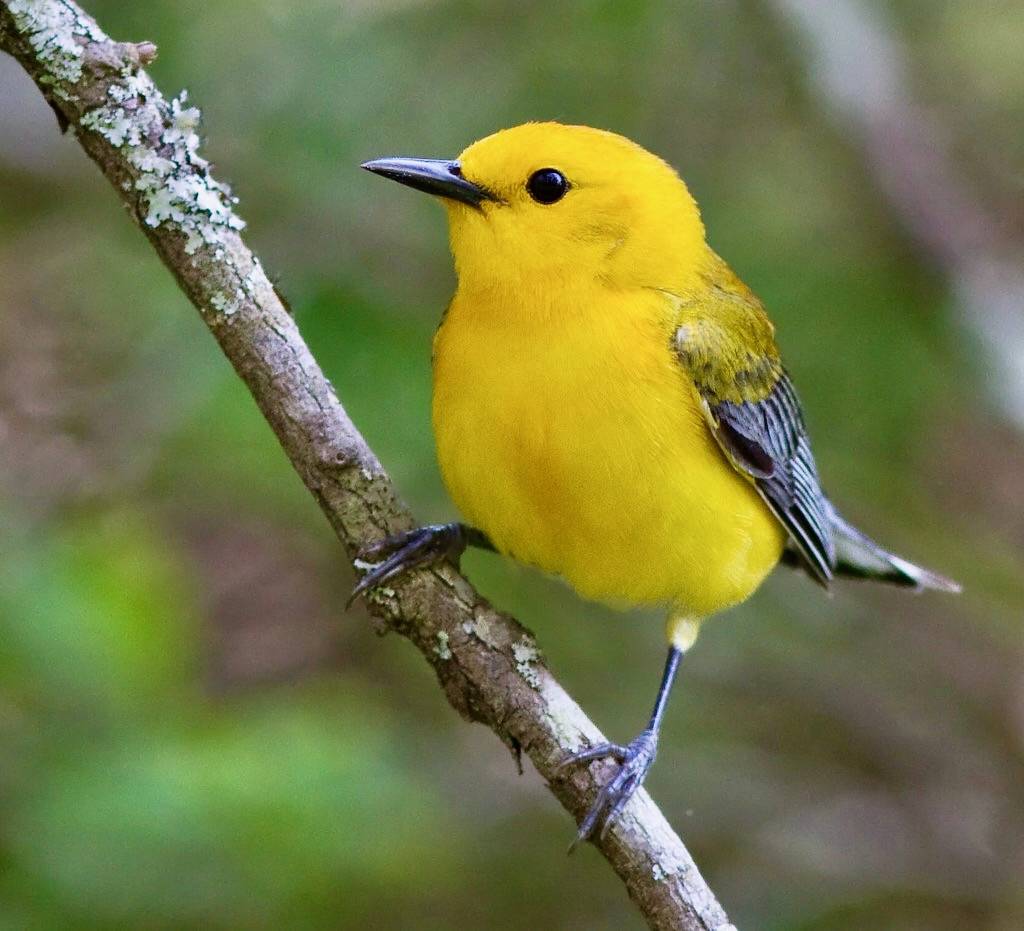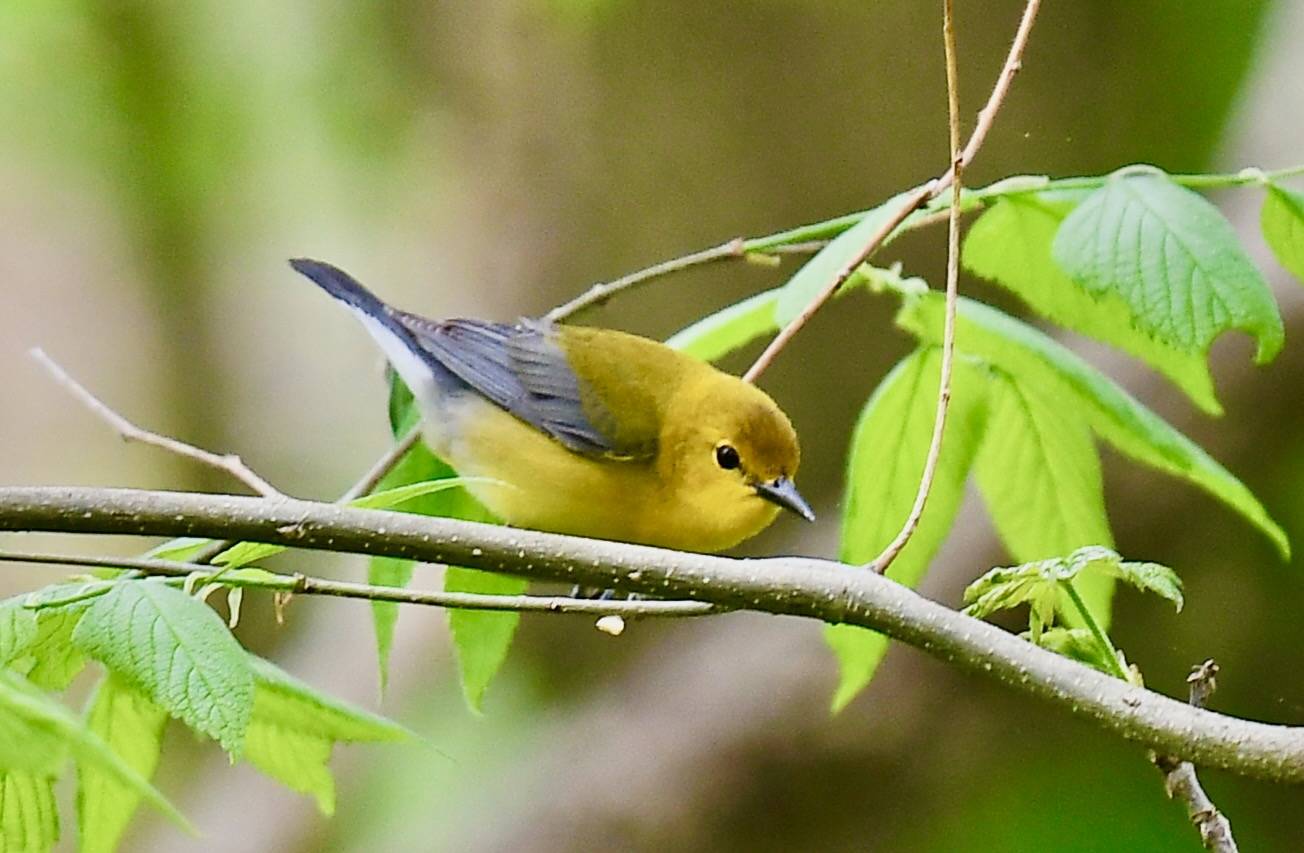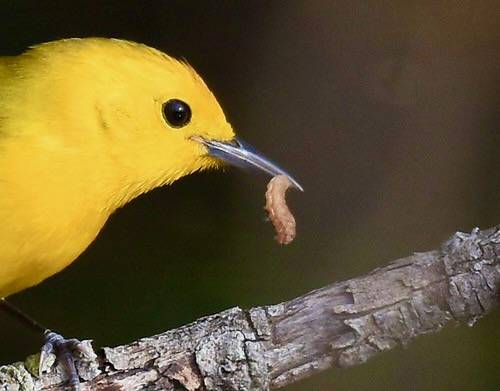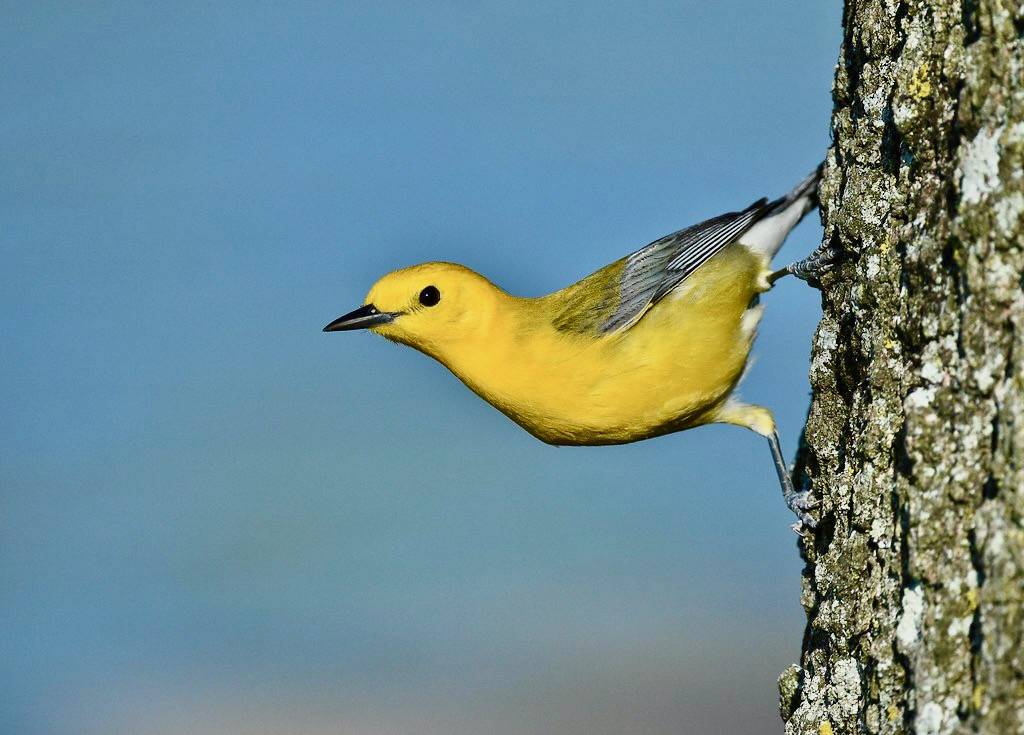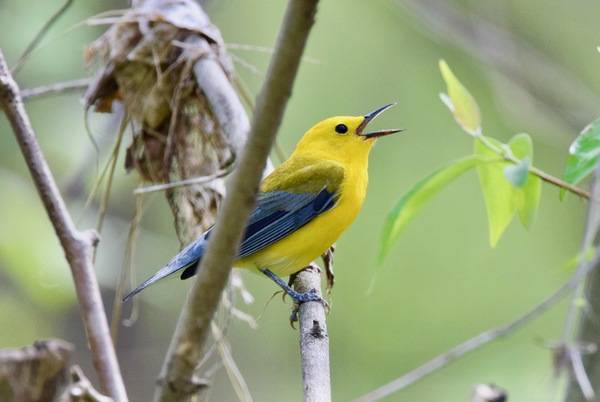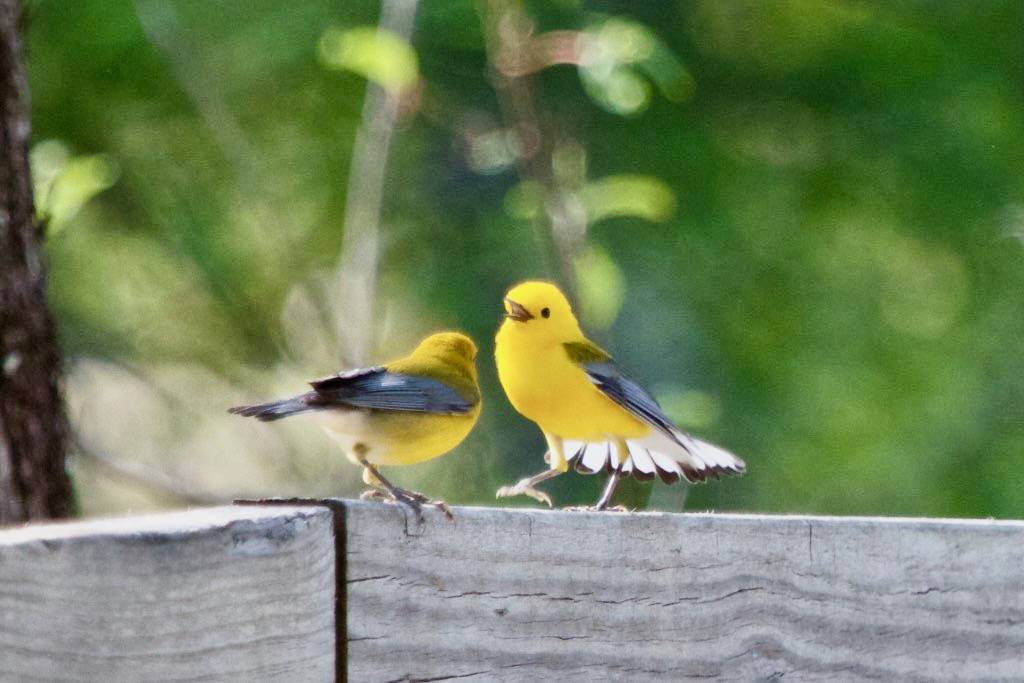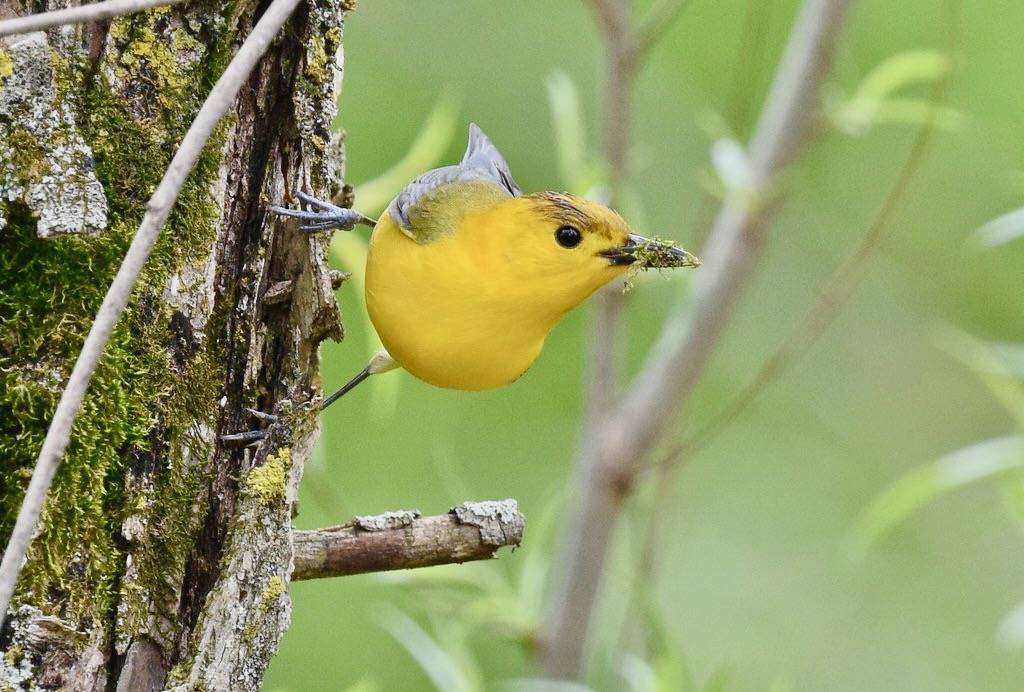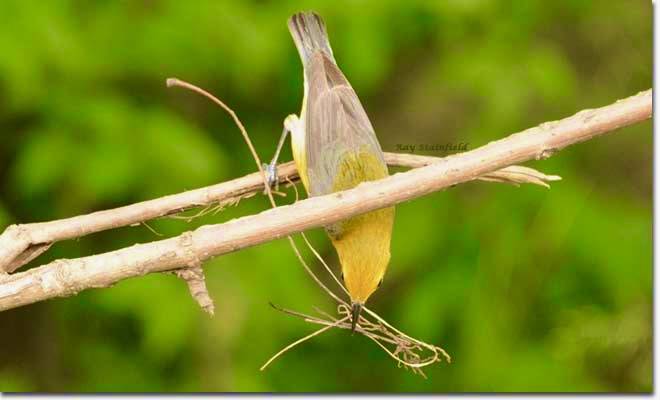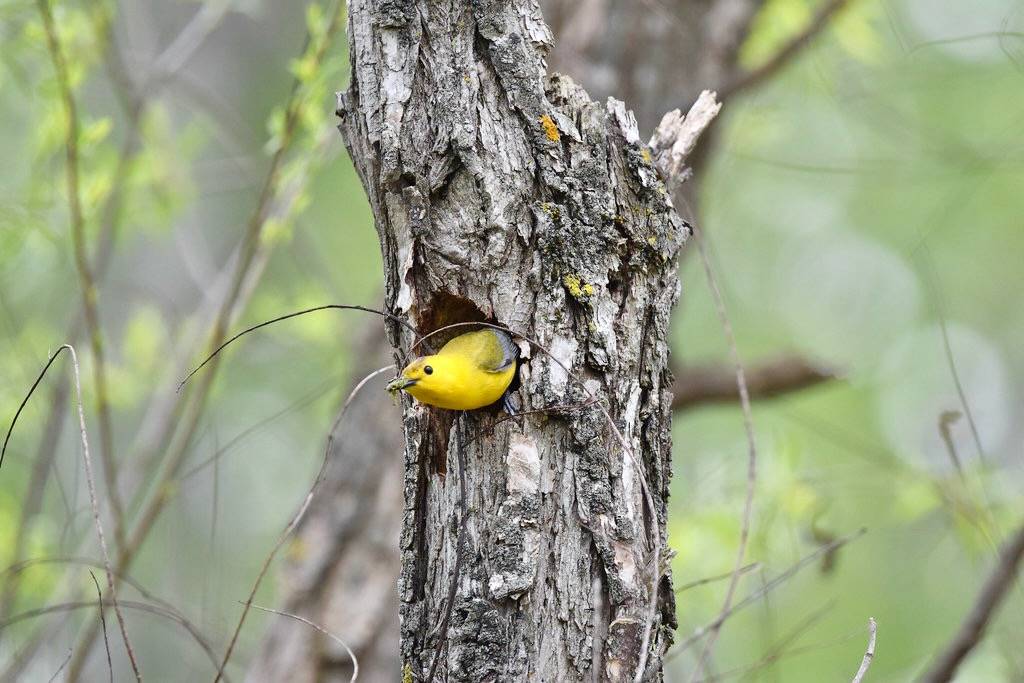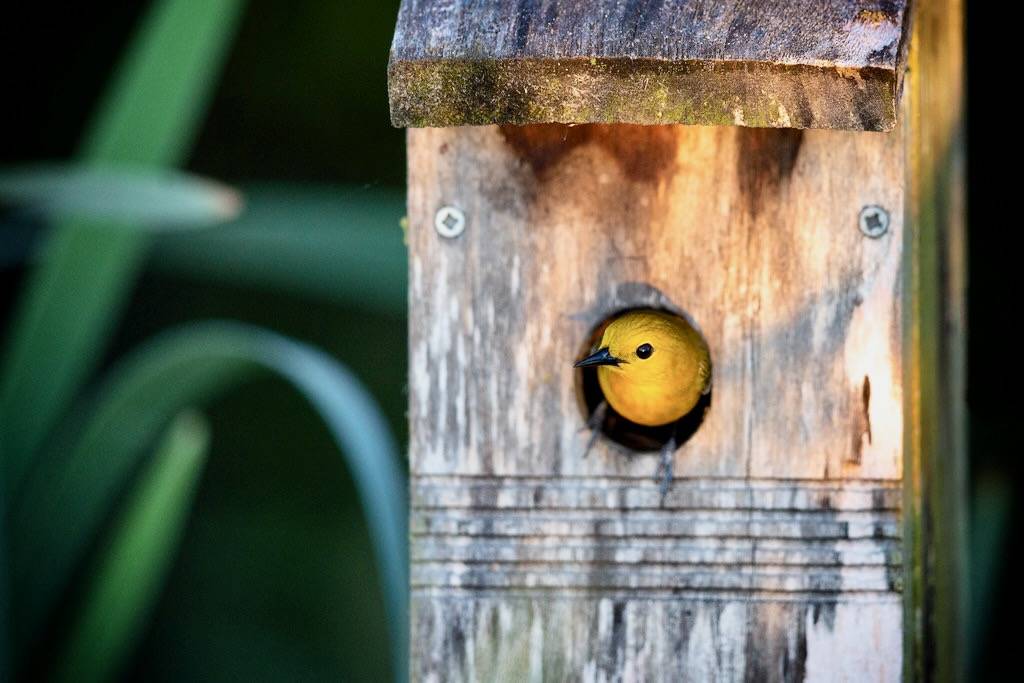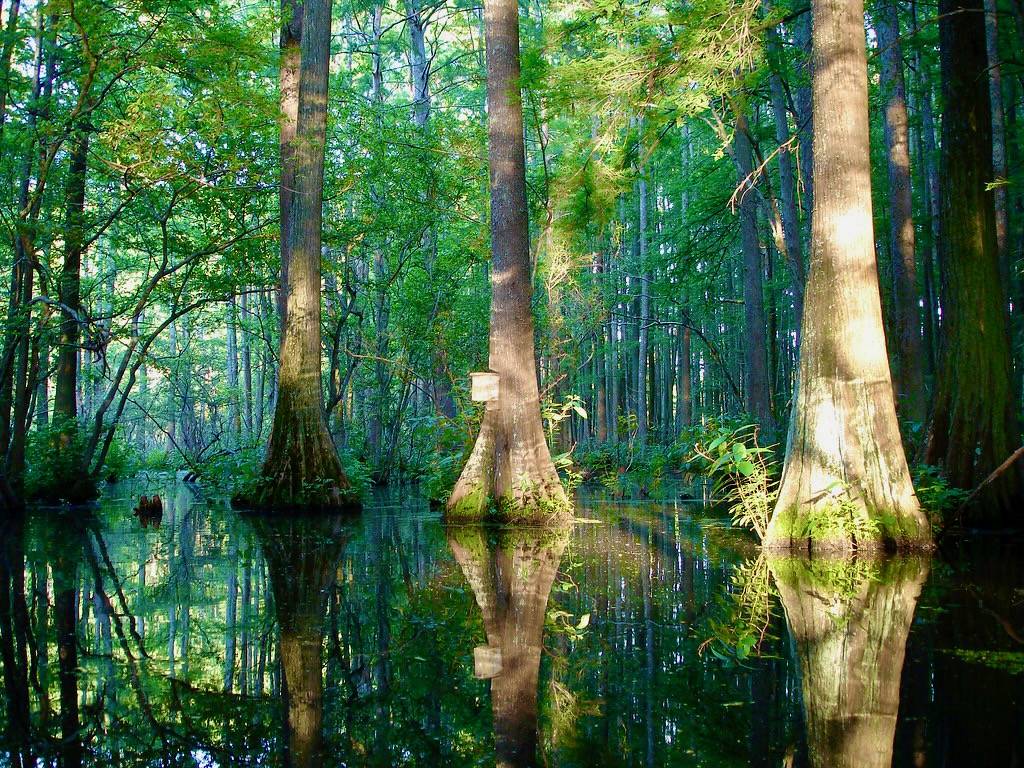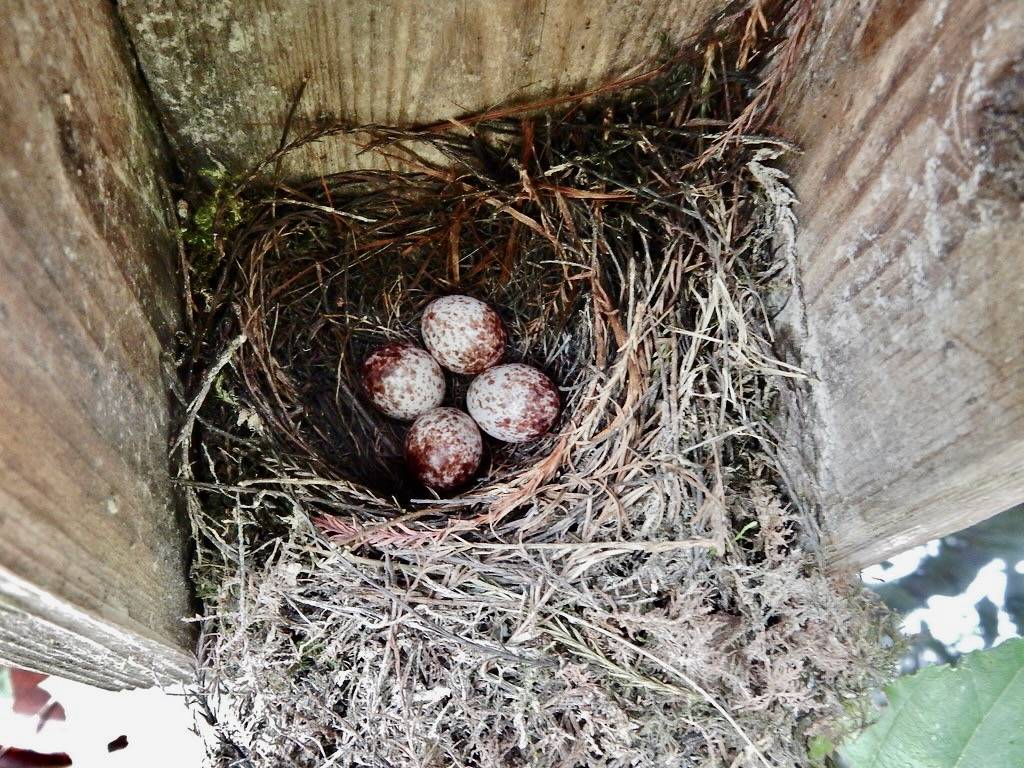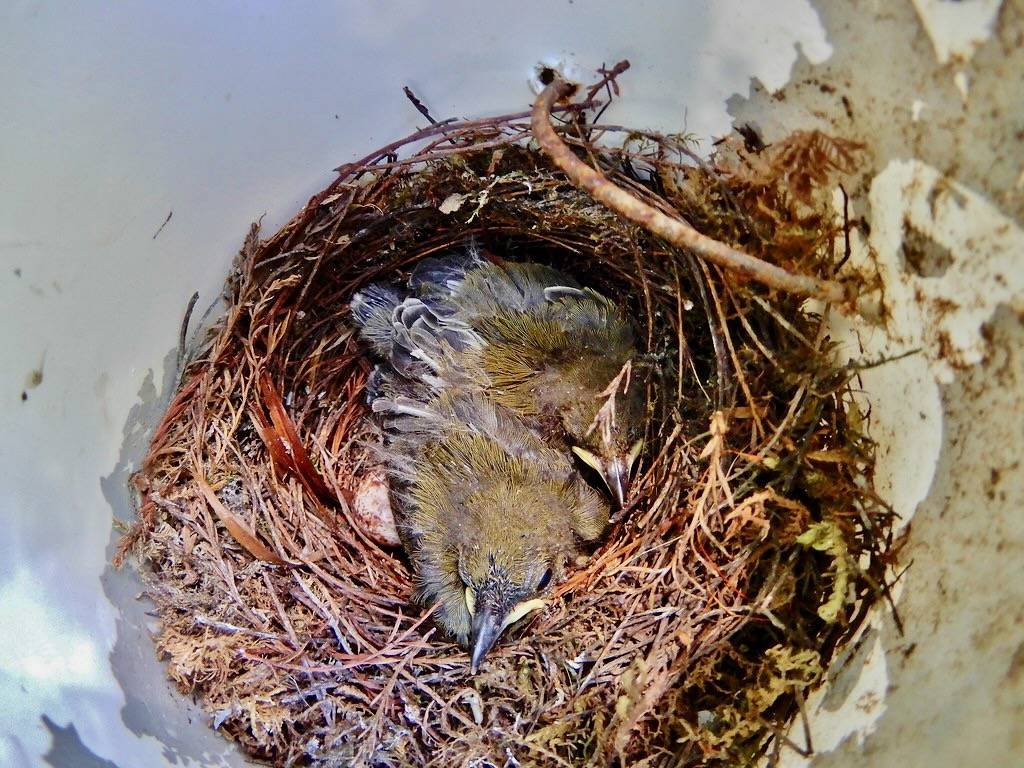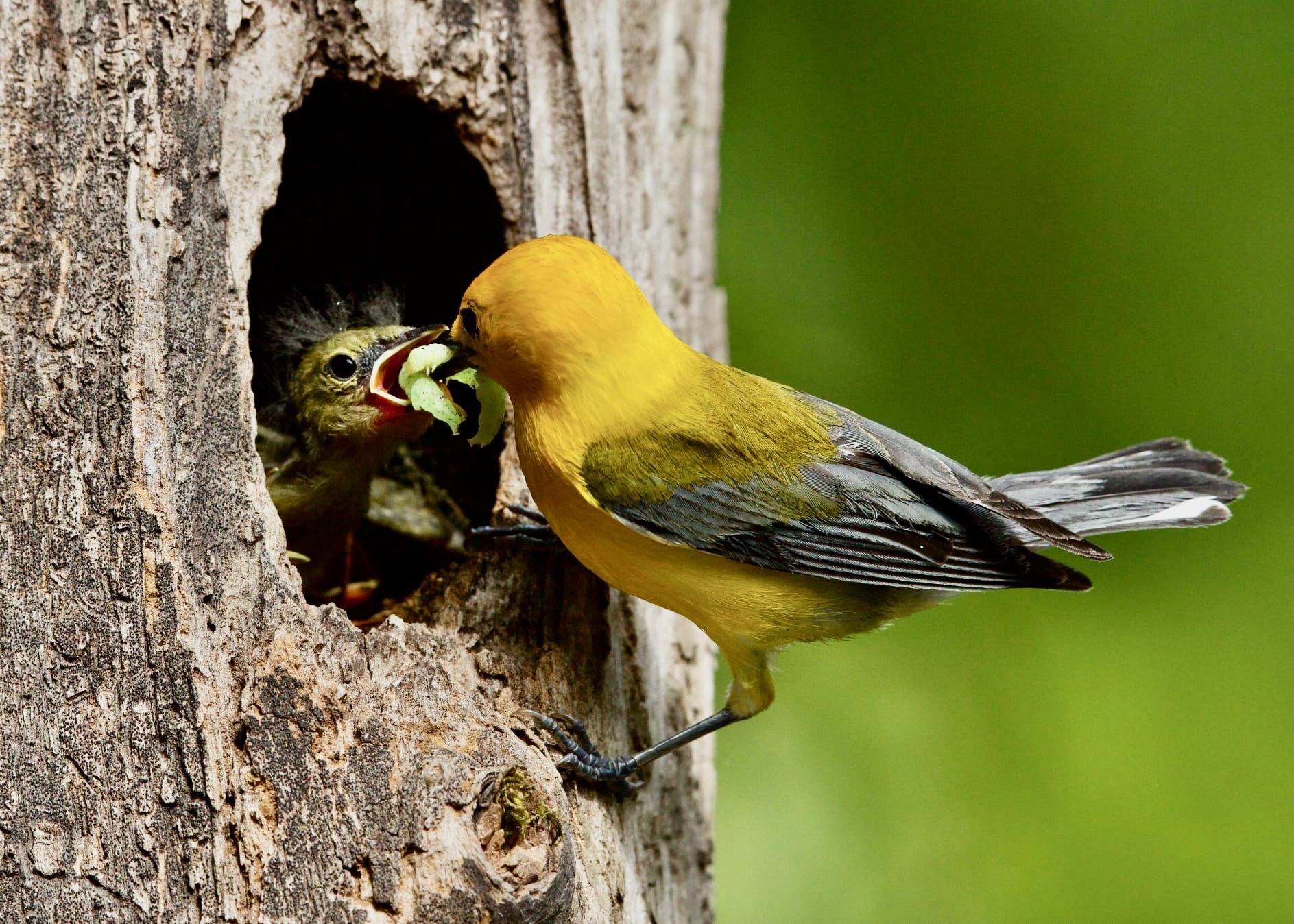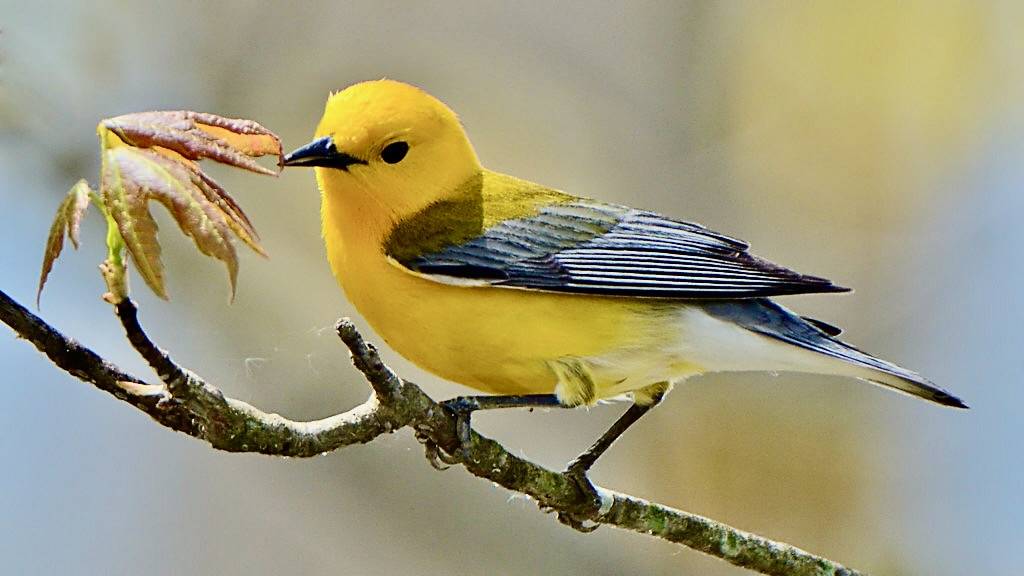Prothonotary Warbler
Based on data compiled for Salter Grove during 2002-2023, the Prothonotary Warbler has only been seen once in mid-April 2021. It was seen foraging in brush beneath a white mulberry tree growing above the high tide line along Marsh Trail.
The yellow in its plumage is so brilliant that it would be hard to miss even in dark forest understory. It is most abundant in the swampy woodlands and bottomland forests of southeastern United States but is also found breeding along rivers as far north as southeastern Ontario in Canada and westward to Wisconsin. Its winter months are spent in the mangrove forests of the West Indies, Central America and northern South America.
Unlike other warblers of the Northeast, the Prothonotary Warbler prefers to nest in holes of standing dead trees. It favors the old nests of Black-capped Chickadees and Downy Woodpeckers if not chased away by competing House Wrens. Its willingness to use man-made nest boxes has made it possible to maintain breeding populations where numbers had declined due to habitat loss, especially in southern United States.
The Prothonotary Warbler was an inadvertent player in the House Committee on Un-American Activities (HUAC) during the Cold War, and may have assisted in launching the political career of a former president.
Wait! What?
In 1948, Alger Hiss was under suspicion of being a Soviet spy, a very serious charge because he had been a senior State Department official. His accuser Whittaker Chambers was an editor of Time Magazine, himself a member of the Communist Party, and a former Soviet spy.
To establish that he and Hiss were collaborative members of the Communist Party in the 1930's, Chambers offered many details about Hiss under oath to prove that the two men knew each other--including that of Hiss being very excited once over a rare sighting of the Prothonotary Warbler on the Potomac River.
During his own testimony before HUAC, Hiss refuted Chambers' testimony and denied knowing Chambers. However, Richard Nixon, a first term congressman in the committee, got Hiss to talk about his hobby of birdwatching and his excitingly rare Prothonotary sighting on the Potomac, thus lending credence to the possibility that he had bragged about this to Chambers, and likely may have been lying about the relationship between them.
As a cooperative witness, Chambers escaped punishment, but Hiss was ultimately convicted of perjury and was sentenced to serve five years in a maximum-security federal facility. Richard Nixon used the political cachet gained from the Hiss affair as a stepping stone to the U.S. Senate which lead to the Vice Presidency under President Dwight Eisenhower, and then eventually to the Presidency.
For more information:
https://www.allaboutbirds.org/guide/Prothonotary_Warbler
https://www.audubon.org/field-guide/bird/prothonotary-warbler
https://en.wikipedia.org/wiki/Prothonotary_warbler
https://animaldiversity.org/accounts/Protonotaria_citrea/
https://thehill.com/opinion/criminal-justice/4163728-the-hunt-in-red-august-1948-the-case-of-alger-hiss-soviet-spy/

